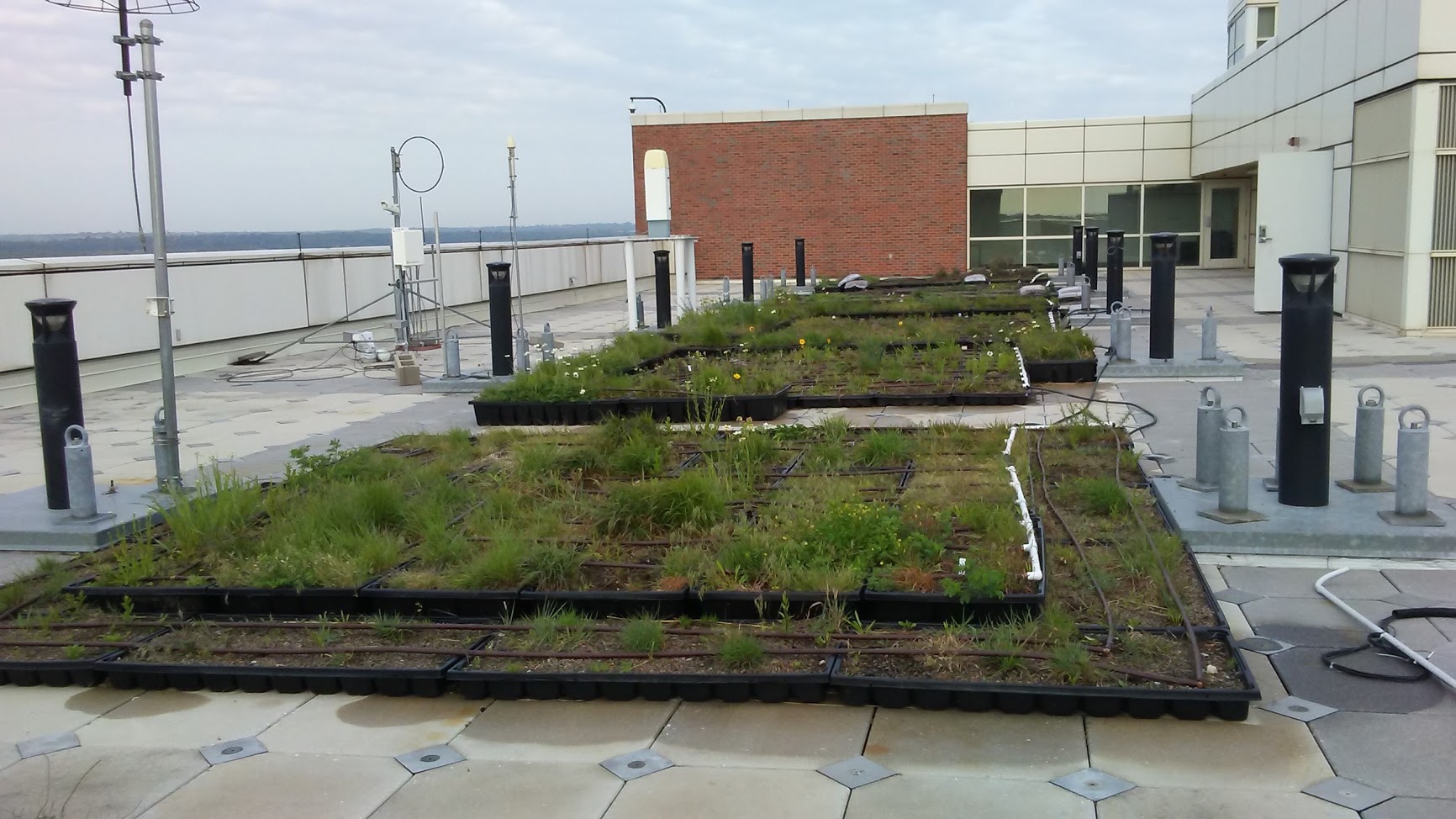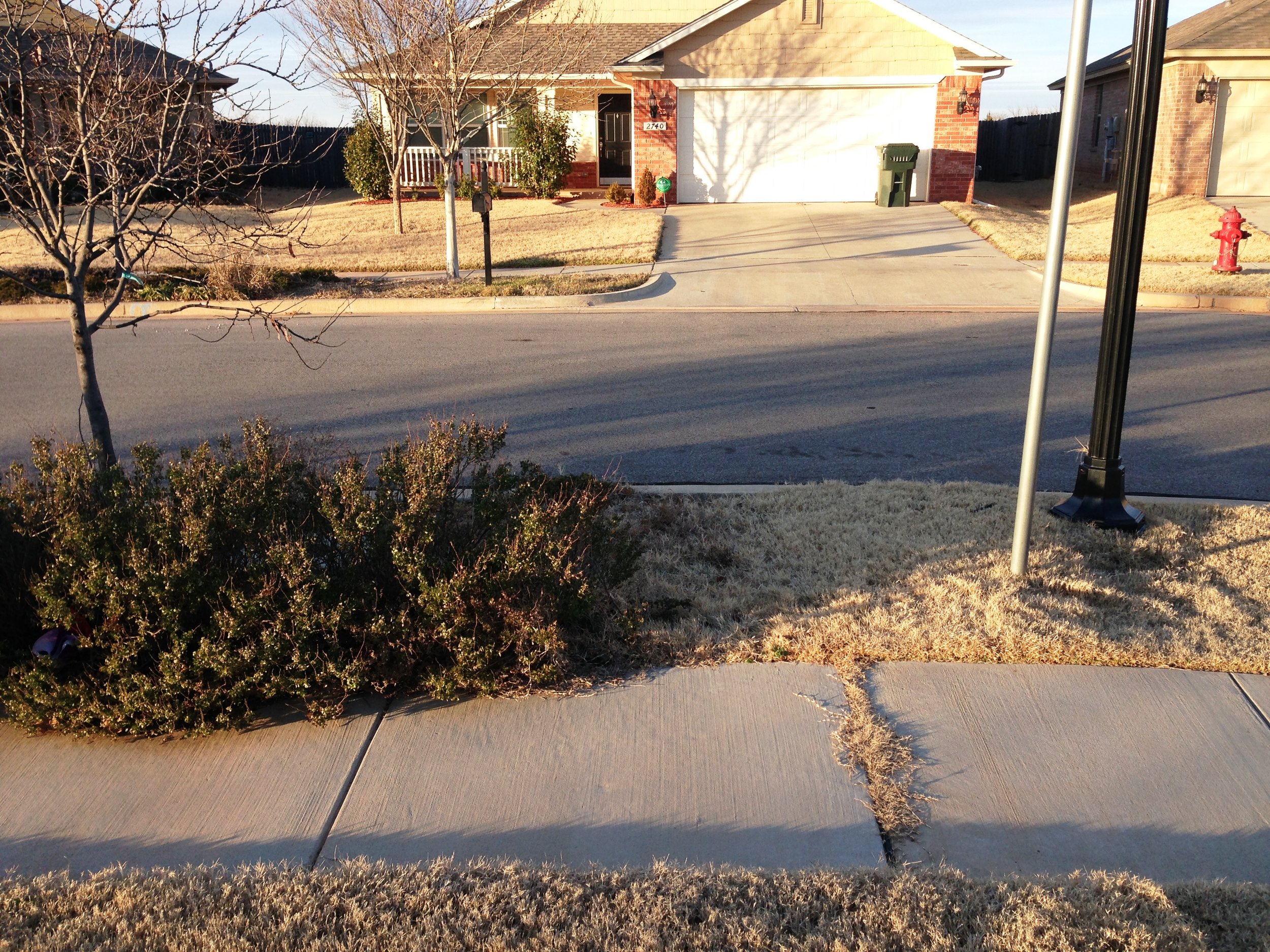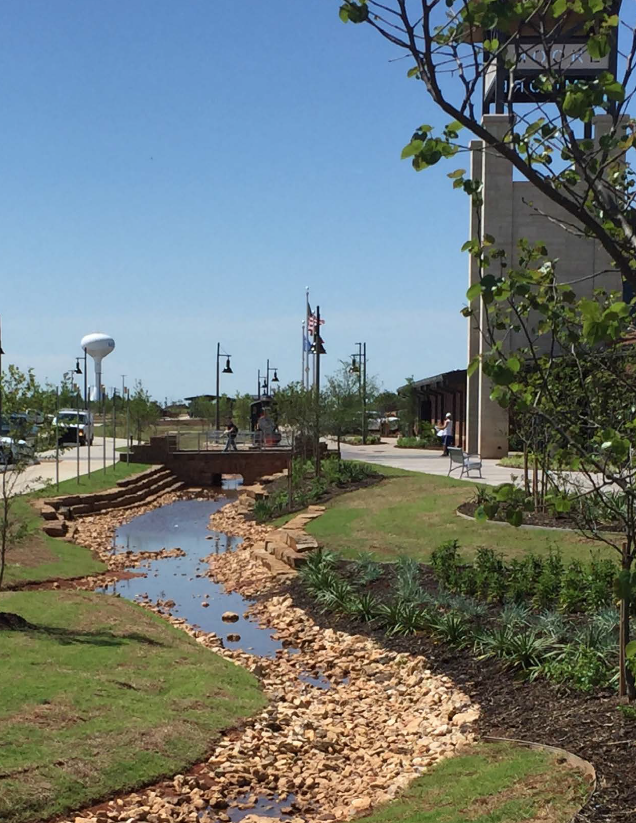Low impact development
Pictured | Left to right: OU Rooftop Rain Garden, Trailwoods Rain Garden
What is the issue?
The natural hydrologic cycle is dramatically changed when land is developed in the usual way. That is because vegetation is removed, soils are compacted, and impervious surfaces like roads, parking lots and roofs are installed. Unlike in natural, undeveloped areas where stormwater is primarily captured by plants and soil, in developed areas, impervious surfaces stop infiltration and lead to increased runoff which, in turn, leads to flooding and pollution. Conventional stormwater infrastructure is designed to get that water out of the way and to the streams as quickly as possible to try to lessen the local impact of flooding. Of course, these measures do not stop flooding completely and add to downstream fish and wildlife habitat loss, as well as increase the amount of pollutants discharged into waterways. Low Impact Development (LID) reduces runoff volumes and improves stormwater quality.
What is LID?
Low Impact Development, or LID, is an approach to land development (or re-development) that works with nature, mimicking its processes, to manage stormwater as close to where it falls as possible. This approach seeks to maintain natural site hydrology within the developed arena. It reduces stormwater runoff volumes and improves stormwater quality through infiltration, evaporation, transpiration and storage. LID employs principles such as reducing impervious surfaces to allow water to soak into the ground where it lands, preserving and re-creating natural landscapes, and treating stormwater as a resource instead of a waste product. When holistically applied throughout a watershed, LID can even greatly reduce the damage caused by flooding.
Examples include:
Rain water harvesting with rain barrels or cisterns to allow reuse of stormwater;
Commercial and residential rain gardens or bioretention which capture, soak in and treat stormwater;
Green roofs which can provide habitat and reduce the heat island effect;
Pervious pavers, concrete and asphalt which allows stormwater to infiltrate into the subsoil; and,
Green parking which can include pervious pavement, bioswales, rain gardens, and narrower spaces.
What can I do to help?
Install a rain barrel which promotes conservation and saves money on water bills by storing stormwater for later use for irrigation, car washing, and other activities;
Install a rain garden in a low area that will capture stormwater runoff from your property to be stored and treated by native plants;
Direct water from your downspouts away from hard surfaces and onto landscaped areas or into areas that will disperse its energy;
Use pervious pavers, concrete or asphalt when installing a driveway, patio or sidewalk, so that the stormwater will infiltrate instead of runoff; and,
Talk to your neighbors or neighborhood association to discuss installing neighborhood-sized features.


